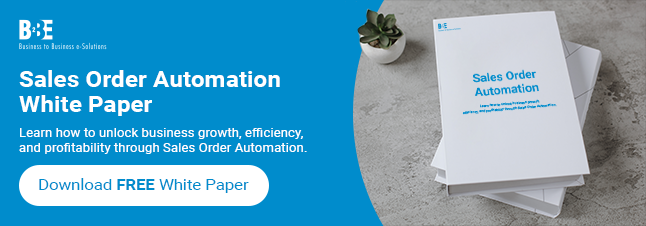In today’s business environment, orders don’t just come from one channel. Your customers might send them via EDI, email, fax, or even through online portals. And while that flexibility is great for them, it can cause major inefficiencies internally — unless you have a streamlined sales order processing system in place.
This is where sales order processing in an ERP system becomes crucial.
How Sales Order Processing Works in ERP
At its core, sales order processing is the workflow that takes an incoming order and turns it into a fulfilled delivery. In an ERP system, this typically involves the following steps:
1. Order Capture
The sales order is received and then logged into the ERP — this is where manual entry often slows things down.
2. Order Validation
The system checks the order against stock levels, pricing agreements, and customer data.
3. Approval and Confirmation
If the order passes validation, it’s approved, and an order confirmation can be sent to the customer.
4. Fulfilment and Shipping
The warehouse is notified, stock is picked and packed, and the order is dispatched.
5. Invoicing and Payment
The ERP system generates an invoice, tracks the delivery, and manages the payment process.
This sales order process sounds efficient — and it can be — but only when sales orders are captured accurately and without delay.
Schauen Sie sich unser Video unten an:
The Challenge: Too Many Channels, Too Many Manual Steps
When orders arrive through different channels, each requires a different handling process. EDI orders might be more structured, but emailed PDFs and faxes still require human intervention — usually in the form of manual data entry, which leads to delays, errors, and missed shipments.
B2BE’s Omnichannel Sales Order Automation
B2BE solves this challenge with a unified approach to sales order processing across all channels:
- EDI Integration for structured order data from major trading partners.
- Email OCR to read and digitise PDF or scanned orders with high accuracy.
- Customer Portals to enable online order placement, reducing email and phone orders.
All orders, regardless of source, are validated and routed automatically into your ERP system — no rekeying required. This not only speeds up the order-to-fulfilment cycle but also improves accuracy, visibility, and customer satisfaction.
From Chaos to Control
In conclusion , sales order automation isn’t just about saving time — it’s about gaining control over a traditionally messy process. With B2BE’s solutions, businesses can eliminate bottlenecks, reduce order errors, and ensure consistent, real-time fulfilment — even in a multichannel world.
Ready to simplify your sales order processing? Learn how B2BE can help you automate every channel and connect your orders straight to your ERP.
About B2BE
B2BE delivers electronic supply chain solutions globally, helping organisations to better manage their supply chain processes, providing greater levels of visibility, auditability and control. We’re driven by a passion for what we do, inspired by innovation, and underpinned by a wealth of knowledge. With over 20+ years of experience, the B2BE teams operate worldwide.
For more information, visit www.b2be.com.

